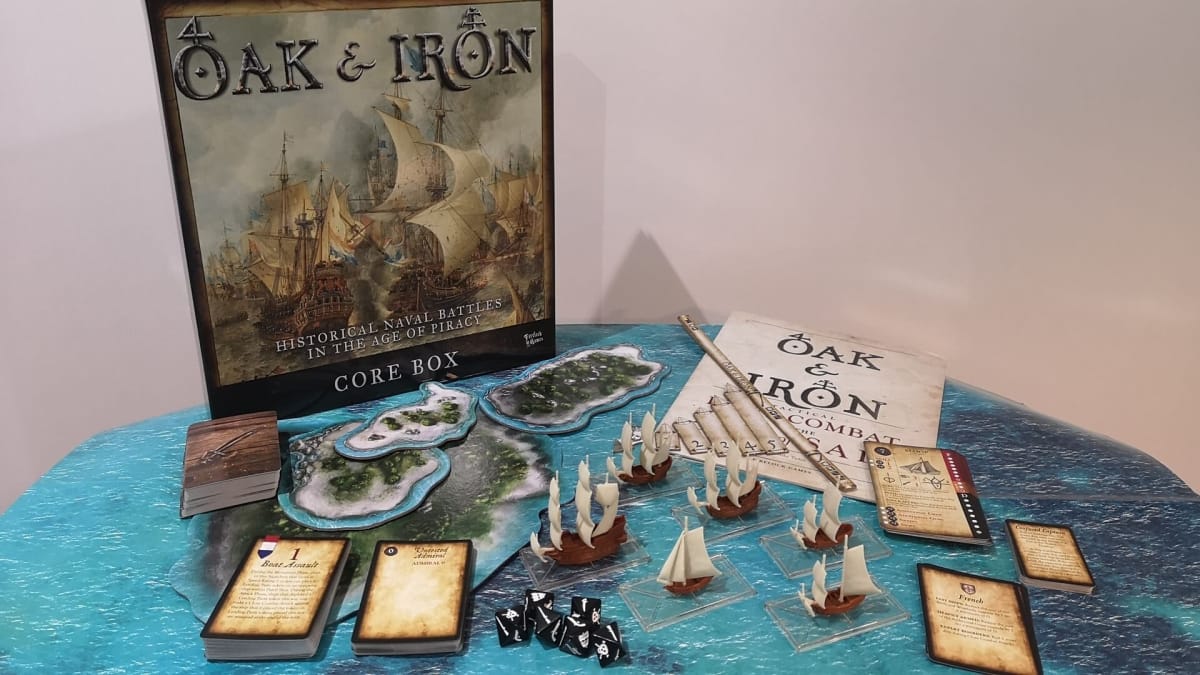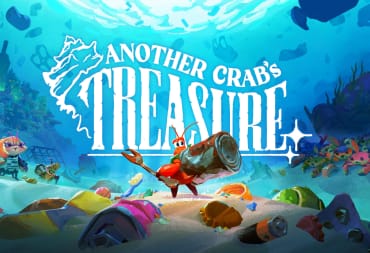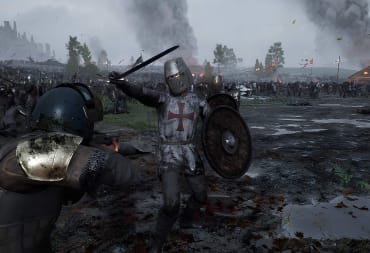Oak & Iron is a tabletop wargame set in the age of fighting sail, 1650 to 1750. In this article, we're going to look at the starter set, the Oak & Iron Core Box. We'll check out what's in the box, the rules, as well discuss who the game is for.
This article forms part of our Nautical Tabletop Month that's running across all of November. We're going to look at different nautical wargames and board games, as well as interview developers about capturing the sea feel on the tabletop. We'll also look at nautical factions in popular wargames along with tabletop accessories that are available to keep your hobby ship-shape. You can see all the articles here on the hub. So come aboard as we set sail and celebrate all games nautical in nature.

You can buy all the Nautical Tabletop Month products from our tabletop sponsor, Firestorm Games.
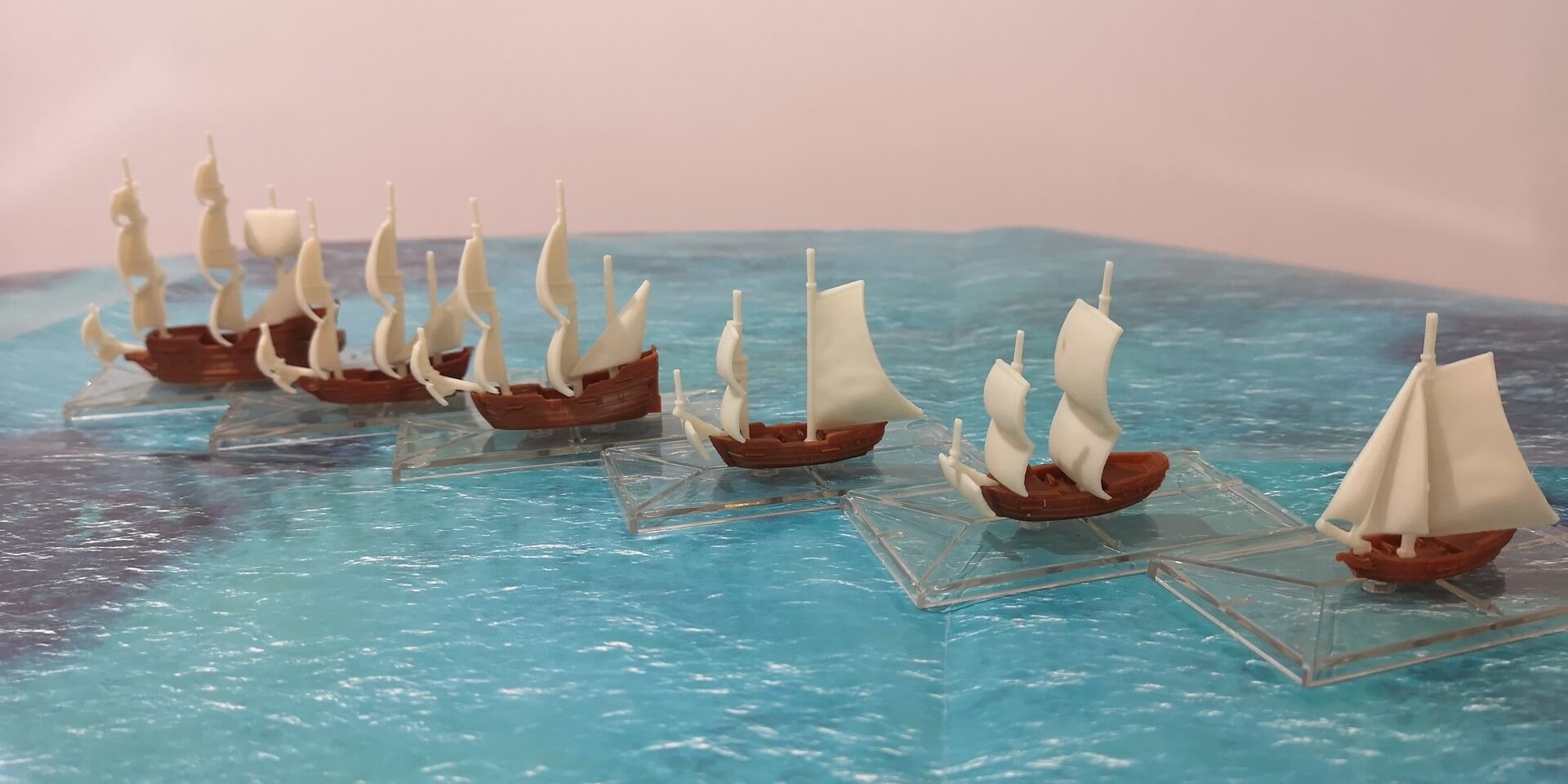
The Oak & Iron Core Box contains everything that 2 players need to play Oak & Iron. It requires no additional tools or components beyond what’s included unless you want to expand your fleets further. It is also playable out of the box, as the ships are single pieces with clip-in sails and bases and the rules can be learned as you play through your first game.
The Core Box contains:
- 6 plastic ship models (Light Galleon, Petit Frigate, Fluyt, Brigantine, Corvette, and a Sloop)
- 5 Nation cards (England, France, Spain, The Netherlands, and Pirates)
- 19 Admiral cards
- 46 Upgrade and Captain cards
- 39 Initiative cards
- 15 Event cards
- 21 scenario cards
- 6 Oak & Iron Custom Dice
- 1 set of 5 movement tools
- 1 range ruler
- Tokens and counters
- 17 Double-sided terrain tiles
- 3x3 foot sea mat
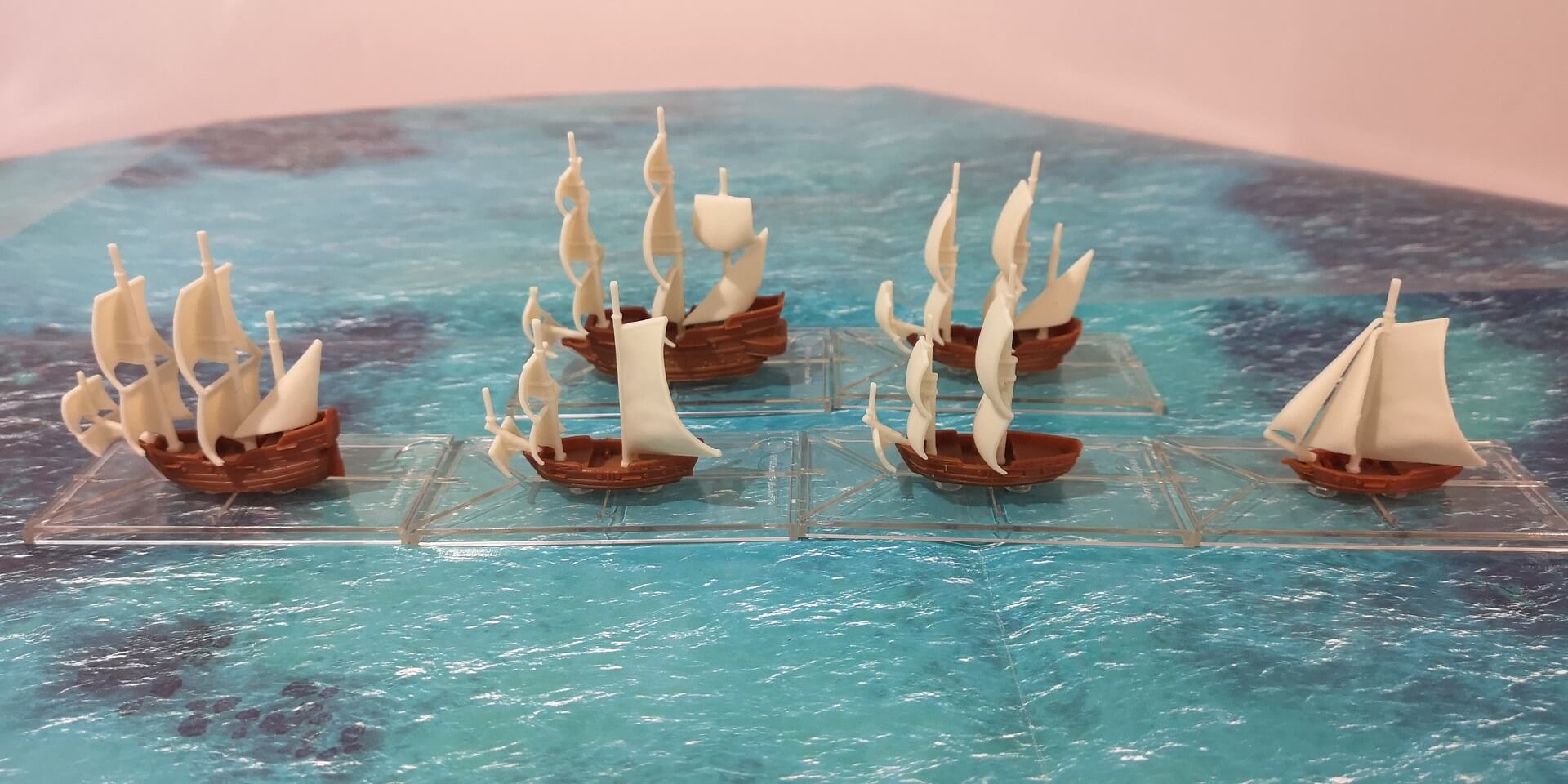
The ships are slightly smaller than those players might be used to coming from other nautical wargames, but that’s because the focus is on command of the ships, controlling the fleet from an admiral’s perspective, rather than individual ship actions. You still move ships independently, but you can feel the drive for formation control.
Being playable out of the box might make you think that the ships are more like board game pieces and lack the detail of miniatures that you build yourself. But the Oak & Iron ships look awesome, have a lot of detail, and can be painted, customized, and rigged as you see fit. Having them playable out of the box means that the game can be much more inclusive for non-wargamers, bridging the gap between other tabletop players.
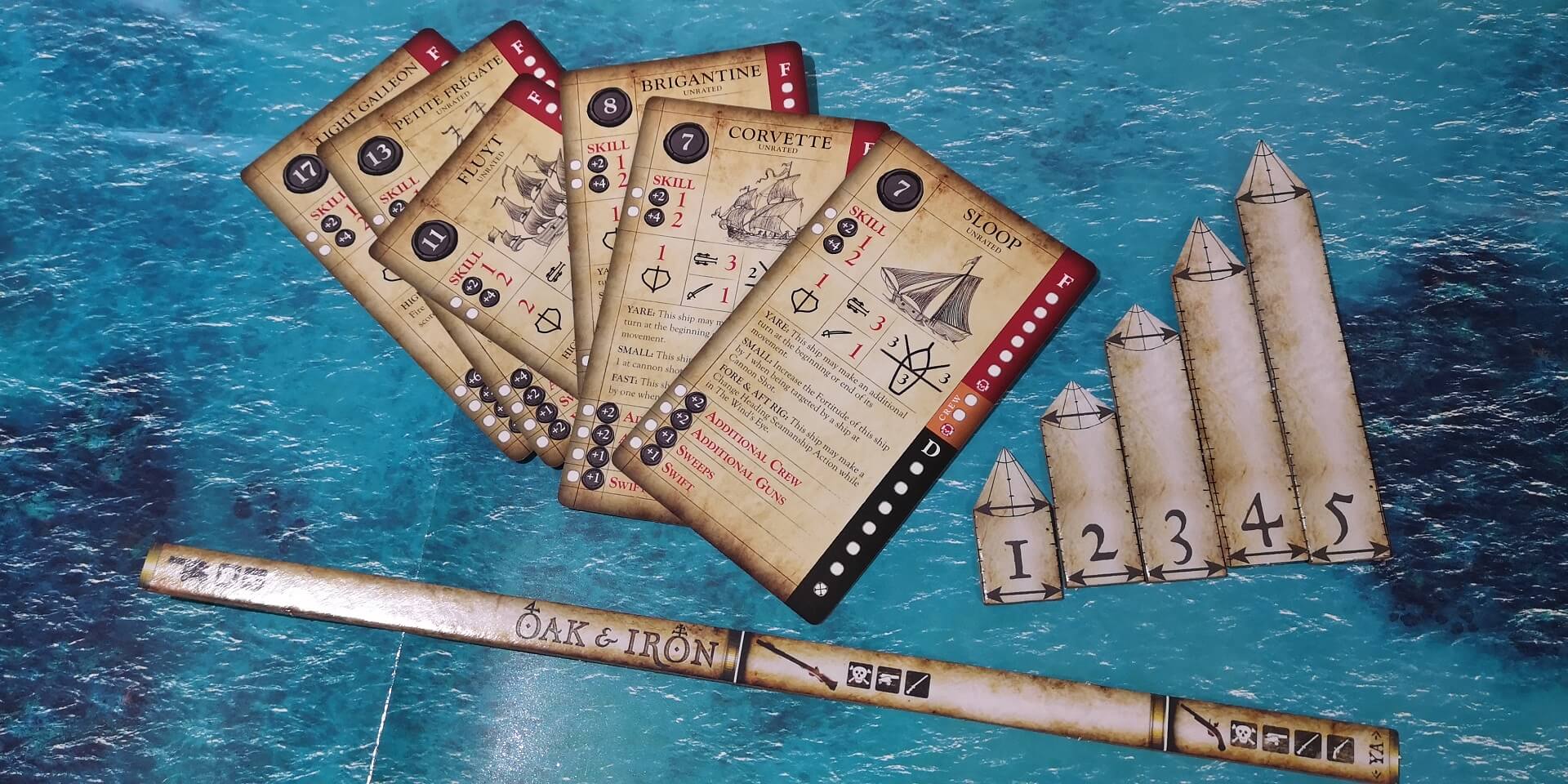
The focus of the Oak & Iron rules is simplicity where it matters, and tactical depth everywhere else. Movement is done with range rulers of set dimensions, and dice rolls are completed with the custom dice, with symbols representing the different weapons that work at specific ranges (cannon, musket, pistol, and close combat).
What really stands out for Oak & Iron, is how it handles the different factions, and it all begins with the faction cards when creating a force. The different ships types between factions are the same, the real differences between the factions themselves are driven by the unique rules on each faction card. The English for example roll more dice during skill tests and get to reroll a dice when firing at musket and cannon range and the French get to reduce the cost of some speed and armament upgrades, along with rolling an additional dice during boarding actions.
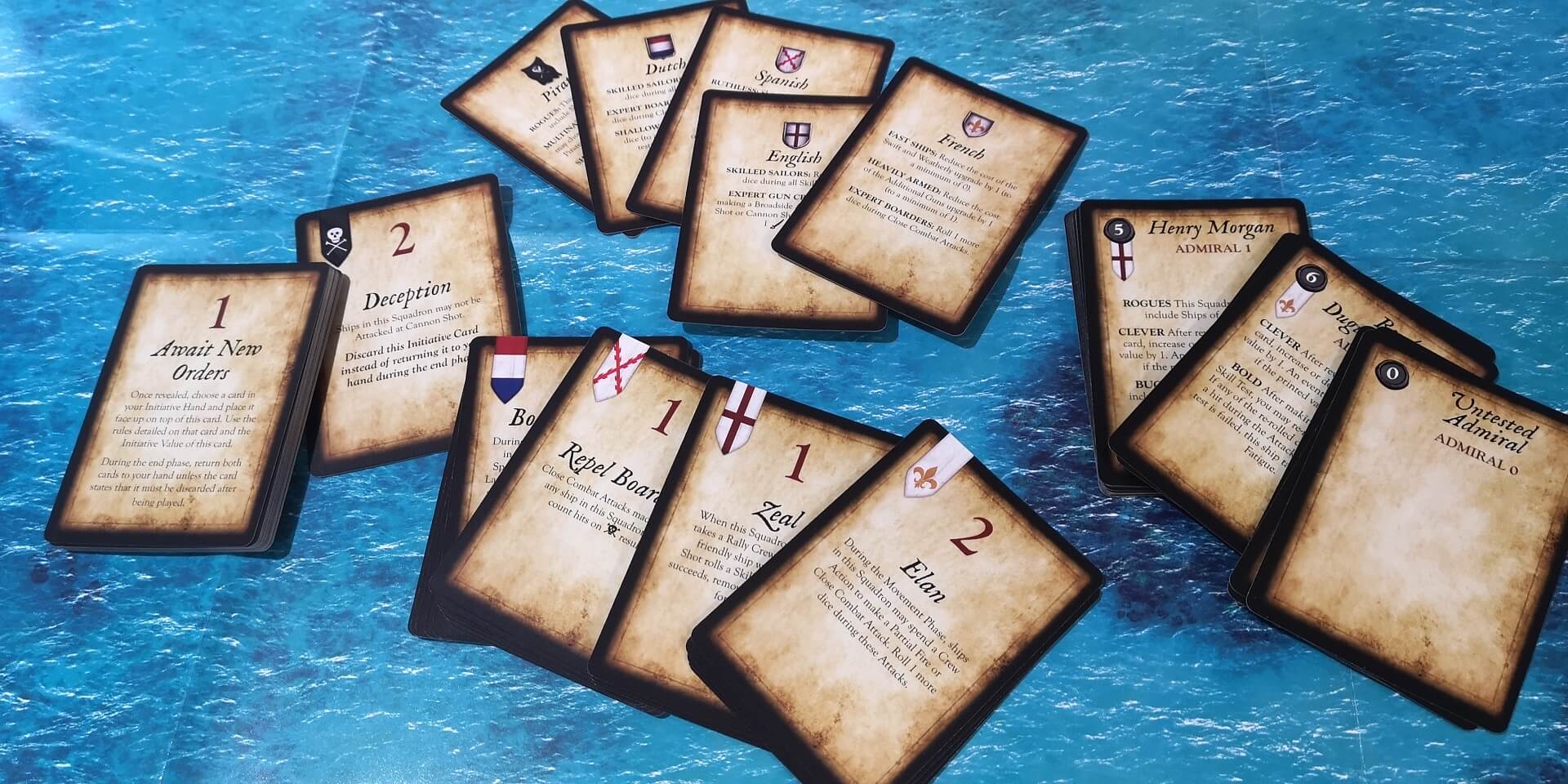
Players then get to pick their admiral from a set of faction-specific famous admirals with special abilities, or from the cheaper neutral admirals with no abilities. Then, once players have selected their fleet, they put together a hand of initiative cards from a set of neutral cards and their faction-specific cards.
The initiative cards are what really drive the tactical element of Oak & Iron. An initiative card is played at the start of the game face-down and is turned face-up during the initiative phase. Players then have to place their next initiative card face down. This means that you're playing your next turn's initiative card, without knowing the results or final positions of your fleet.
Each initiative card has an initiative value and the player with the highest card activates a ship first in both the movement and attack phases. Each initiative card also has an ability, and that's what really drives each turn. The Dutch 'Size the Opportunity' card allows the Dutch fleet to roll additional attack dice for ships not in formation. This card needs to be played 2 movement turns before you use it, so some degree of planning, judgment, and luck is required to pull it off with the maximum amount of ships.
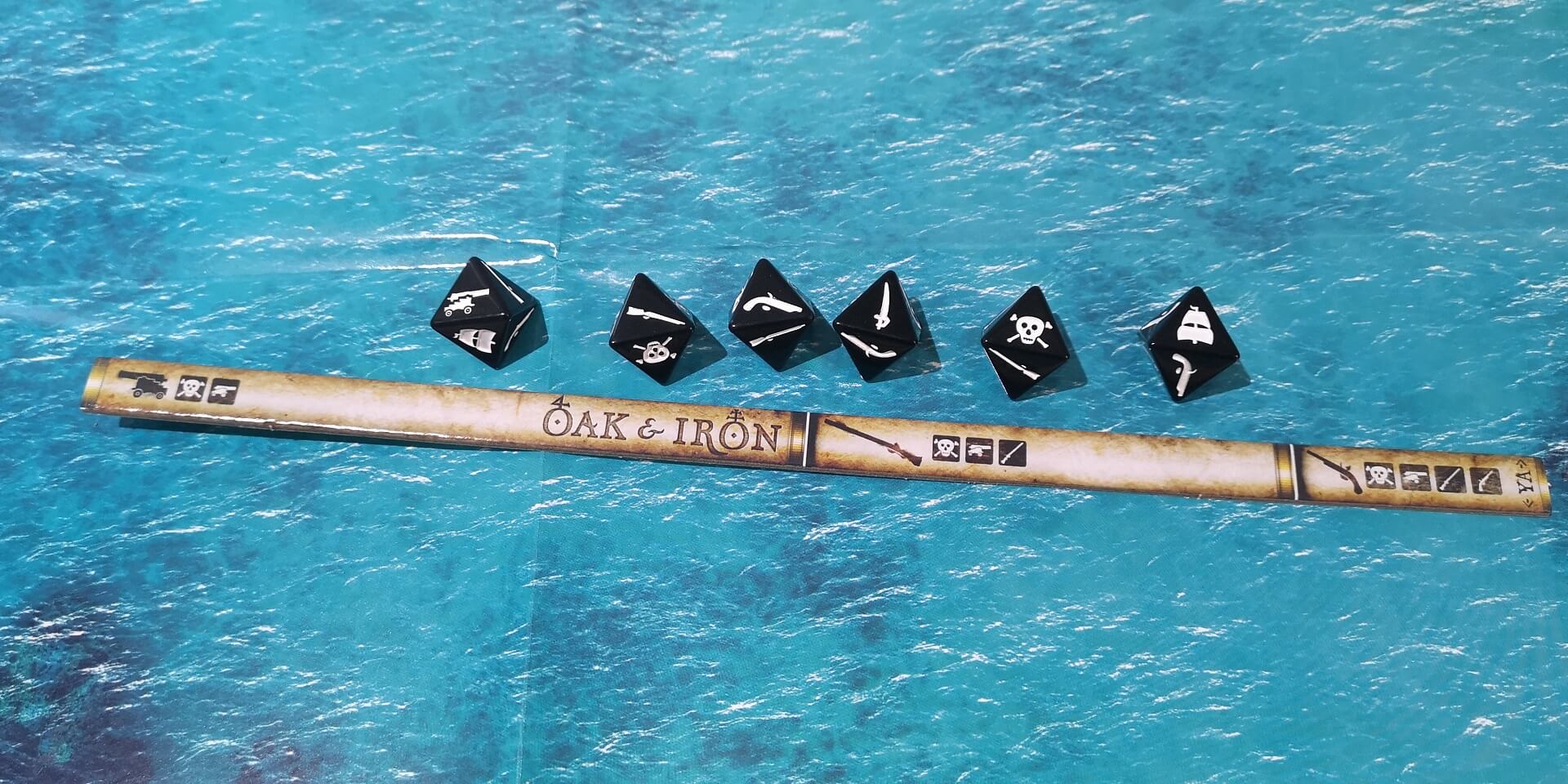
The other element that makes you think ahead are crew actions. Each ship can only make 1 crew action a turn, and crew actions are things like:
- Rallying, which removes fatigue (levels of fatigue reduces the amount of dice rolled for skill and attack tests)
- Reloading cannons (if you don't, then you can only partial shots and not full broadsides)
- Repairing the ship (which stops you from sinking)
- Changing sail settings (to go faster or slower)
Crew actions are important because you're thinking ahead to your upcoming initiative card. Ships can fire 2 broadsides in a turn from both sides of the ship, but that will take 2 turns of crew actions to reload both. So do you take the early shots and spend the next few turns reloading and only firing partial, or wait until they are more effective, but risk taking damage while you get closer?

Because of the simple mechanics for combat and movement, and pretty much everything else going on in Oak & Iron, it allows you to focus on these details and planning. If you want to play an easy game, sail towards your opponent and just smash cannon shot against each other, you can do that, and Oak & Iron make it simple and enjoyable to do, but if you want a deeper tactical layer, then Oak & Iron will give you a very rewarding experience.
Balancing out the forces for Oak & Iron for a 2 (or more) player game is easy, even with the 6 different ships, as each ship has upgrades and each faction has a different choice of admirals. The 5 different factions, along with the ships themselves also give a solid amount of variety between games, which gives the Core Box a fantastic amount of replayability before you even need to think about expansions. It's a great 2-player set, but if both players are serious about playing Oak & Iron, and don't want to split the factions, then each player would do well to get their own Core Set in order to have their own set of initiative cards and ships to choose from.
The Bottom Line
Oak & Iron is a very easy to learn and teach game, with straight-forward mechanics for movement and combat. This, combined with the ability to play straight out of the box with the miniatures make it a fantastic entry-level wargame or gateway game. The deeper level of tactics and strategy then make it an incredibly rewarding experience for veteran gamers. The 6 different ships and 5 factions playable out of the Core Box give it a huge amount of replayability, but also make it an incredible experience to expand from.
Get This Game If:
- You want a fantastic gateway ship wargame.
- You want a rewarding tactical experience.
- You want a huge amount of replayability out of the Core Box.
Avoid This Game If:
- You don't want ships in your game.
- You want to build ships
The copy of the Oak & Iron Core Box used to produce this review was provided by Firelock Games.
Review Summary
Have a tip, or want to point out something we missed? Leave a Comment or e-mail us at tips@techraptor.net
